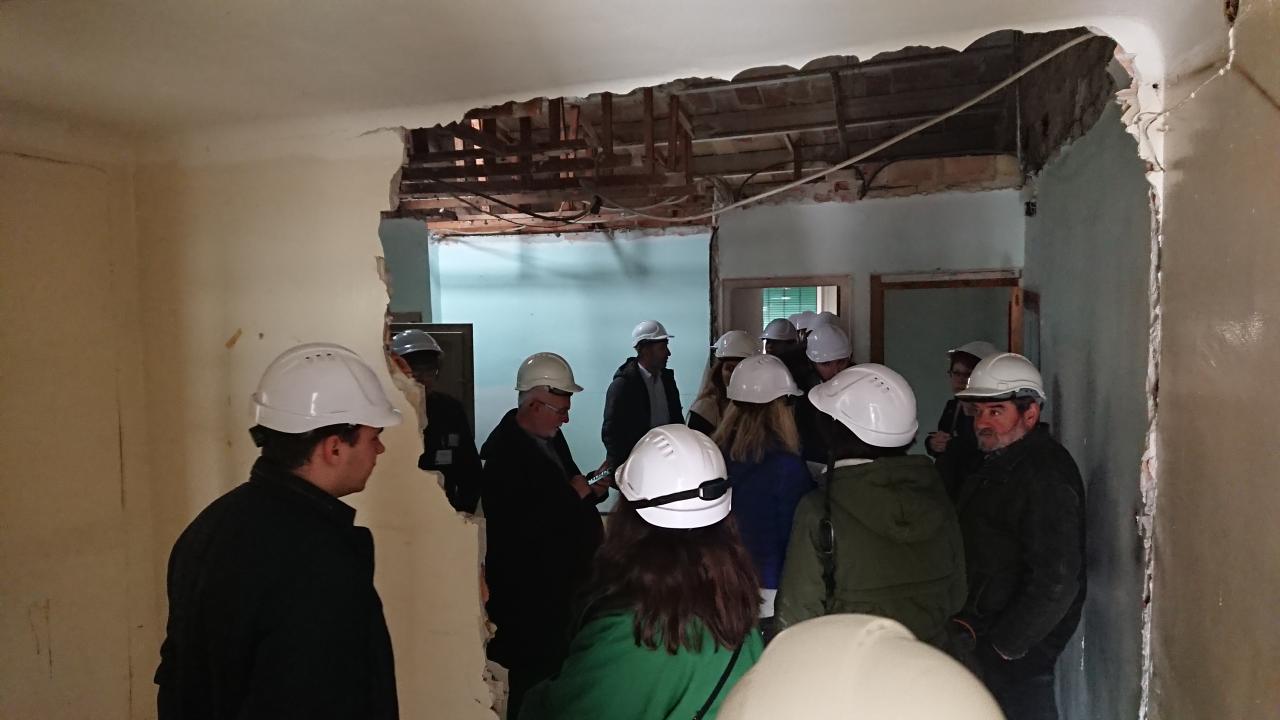As housing becomes an increasingly urgent priority across Europe, the European Commission has launched the “affordable housing initiative” to boost building renovation, cut emissions, and improve quality of life. This aligns with one of URBACT’s main priorities: facilitating collaboration through our Transfer Networks to help cities share and adapt innovative solutions that address vacancy, affordability, and urban decline. These Networks offer municipalities a unique opportunity to learn from one another, transfer proven practices, and create lasting impact in their local contexts.
This is how Vilafranca del Penedès—a small Catalan city—successfully adapted a German model to breathe new life into its unused housing stock, while strengthening social inclusion and public-private cooperation. This Good Practice is a success story from the publication 'Good Practice Transfer: why not in my city?', read it and discover the rest!
From empty homes to inclusive communities
Located around 60 kilometers west of Barcelona, Vilafranca del Penedès is a small town often referred to as the wine capital of Catalonia. After the global financial crisis of 2008, the town experienced a slowdown in population growth, which led to a halt in public housing development.
In response, the municipality pivoted towards urban regeneration. This shift gave rise to “Vilafranca Inclusion”, a project focused on restoring vacant homes while also providing employment and training for unemployed residents. Recognised as a model of excellence, the initiative was awarded the URBACT Good Practice label in 2017 under the title “From Empty Housing to Social Inclusion”.
Despite these early successes, challenges soon emerged. Many large property owners were deliberately leaving buildings vacant, waiting for property values to rise. This led to growing issues such as chaotic squatting and even buildings being under illegitimate or coercive control thanks to corruption and bribery, an unfortunate phenomenon seen across Spain. It became clear that a more strategic solution was needed.
Reframing the problem
The Covid-19 pandemic further intensified housing challenges and underlined the need for long-term, systemic solutions. According to Jordi Cuyàs, Local Project Coordinator, the turning point came with a fundamental change in perspective: “We had to stop seeing the problem only in terms of immediate social needs and start building a structure capable of long-term transformation.”
This meant moving away from reactive measures and instead focusing on creating a collaborative system involving technically skilled and financially capable private partners.
A new more effective approach
Vilafranca’s search for a more effective framework led it to the German city of Chemnitz, home to Agentur StadtWohnen, an agency dedicated to restoring underutilised and deteriorating buildings. As part of the URBACT ALT/BAU Transfer Network, Vilafranca joined other cities—including Riga (Latvia), Constanţa (Romania), Turin (Italy), Seraing (Belgium), and Rybnik (Poland)—in learning from Chemnitz’s integrated housing recovery model.
Public-private synergy: a case for partnership
One of the most promising developments came with a new partnership between Vilafranca and Habitat3, a Catalan non-profit organisation dedicated to providing below-market-rate rental housing. Together with social enterprises, they began rehabilitating housing units while also creating job opportunities.
During the URBACT project timeline, ten housing units were successfully restored. However, implementing this new model continues to be complex—especially in a market where housing issues had long been left solely to private actors. The pandemic further complicated collaboration, as in-person meetings critical for building trust were restricted.
Learning from the network
Through URBACT’s ALT/BAU Network, Vilafranca gained insights from Chemnitz’s centralised housing agency model, which collects data on available properties, engages investors, and facilitates renovation efforts. Particularly appealing was the way Chemnitz tackled real estate speculation, maximised grant efficiency, and reduced long-term costs for both property owners and the city.
The Transferability Study, a key URBACT tool developed collaboratively with all participating cities, enabled Vilafranca to adapt relevant elements of the Chemnitz model to its own local context.
“The shared experiences within the network gave us fresh insights”, said Cuyàs. “We were especially intrigued by the idea of temporary uses—activating a space even while it’s being rehabilitated”.
Looking ahead
Vilafranca is optimistic about the potential of this new, hybrid model. While it requires significant management effort, the municipality believes that a housing agency approach offers more streamlined operations and cost savings.
The current challenge lies in nurturing effective partnerships between public institutions and private entities, ensuring that public interests remain safeguarded throughout.
Looking forward, Vilafranca is continuing to study and adapt additional elements from the Chemnitz example, particularly the city’s homeowner cooperative and student housing initiatives, as promising ideas for further transfer.
Ready for the URBACT Transfer Network journey?
Read more about other URBACT housing Good Practices in our latest article “Six URBACT Good Practices making housing safer and more affordable across Europe”.
Catch up on everything you need to know with recordings and slides from the info sessions organised by URBACT on 23 April and 22 May 2025 – and don’t miss the upcoming ones on 17 and 24 June 2025!
Scan through the URBACT Good Practice Database by filtering “Looking for Partners” for the most up to date information.
Inspired to join an URBACT Transfer Network? Find everything you need to apply on urbact.eu/get-involved.


